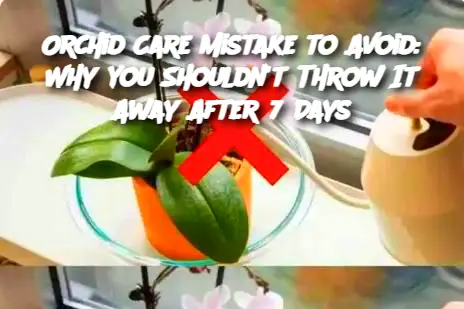ADVERTISEMENT
Caring for Different Orchid Types: While many orchids (like Phalaenopsis) share similar care needs, different species may have unique requirements. For instance, Cattleya orchids prefer drier conditions, while Dendrobium orchids may need cooler temperatures to thrive.
Watering Variations: Some orchid enthusiasts prefer soaking their orchids for 20-30 minutes in water once a week rather than watering them regularly, ensuring the roots stay hydrated.
Frequently Asked Questions:
Why is my orchid wilting or drooping? Wilting or drooping could indicate improper watering (either too much or too little), low humidity, or too much direct sunlight. Assess the orchid’s conditions and adjust care accordingly.
How do I know if my orchid is getting enough sunlight? If the orchid’s leaves are a dark green, it may not be receiving enough light. Light green or yellowish leaves may indicate the orchid is getting too much direct sunlight. Aim for bright, indirect light.
Can I revive a dried-up orchid? Yes, dried-up orchids can often be revived. Focus on trimming any dead or unhealthy roots, repotting the orchid in fresh medium, and providing it with appropriate water and light conditions.
How often should I fertilize my orchid? Orchids benefit from light feeding once a month during their growing season. Use a diluted orchid fertilizer to encourage healthy growth, but avoid over-fertilizing, as this can damage the roots.
By following these simple steps, you can give your orchid the best chance at recovery. Don’t make the mistake of throwing it away prematurely—most orchids just need the right care to bloom again!
ADVERTISEMENT
